Bug Safari #3
Buddy Bee
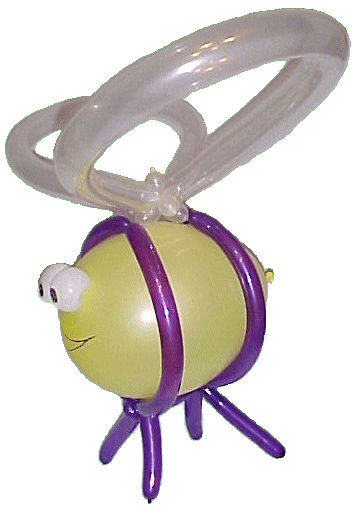
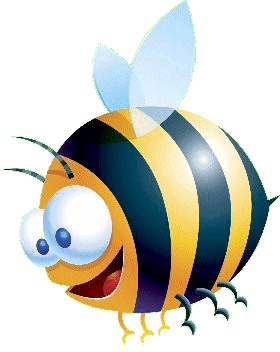


This sculpture uses a yellow 15-inch round, two dark 160 balloons, and two clear 260 balloons plus a white scrap for the eyes and another scrap of any color about 2 inches long.

Inflate the white scrap to about 5 inches and tie it off. Twist it into two
equal bubbles and then tie the opposite ends together.
Now twist the two
bubbles in opposite directions, effectively making both of them a
pinch twist. Save these for the eyes.
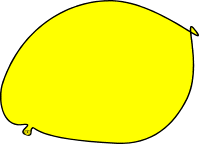
Tie several knots in the 2-inch scrap to make a big knot about the size of a raisin and drop it inside the 15-inch round. Inflate the round to about 12 inches. You need to keep it a bit soft in order to make a raisin twist:
About 3 inches away from the round end of the balloon, pinch the rubber and grab the "raisin" you dropped into the balloon and twist it. Using this as an anchoring point, attach the eyes you made earlier.
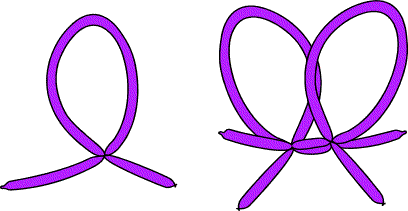
Inflate the dark 160's all the way and release a little air to soften them. In each balloon make a loop not quite big enough to go around the middle of the round balloon. The ends should be uneven, with one end being about 3 inches longer than the other.
In the longer end, make a twist about 3 inches from the loop and attach it to the loop twist in the other balloon. Do this with both balloons so that you have two loops joined together by a double bubble, and with 2 legs descending from each loop.

Inflate both clear balloons all the way and release a little air to reduce the pressure. In each one make a 2-inch bubble at each end and twist them together for a big loop. Connect both loops together to form the wing assembly.
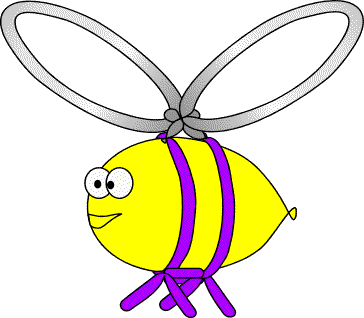
| Now we bring it all together. Slip the 160 loops over opposite ends of the round balloon. Arrange them so the the eyes are in the top side and the legs are on the bottom. Locate the center of the top of each 160 loop and wrap one knot of the wing assembly around this point. Add eye and mouth details with a dry-erase marker. If you want to be entomologically correct, you can take a short piece of a matching 160 balloon and tuck it under the middle of the bee's belly for a third pair of legs. |
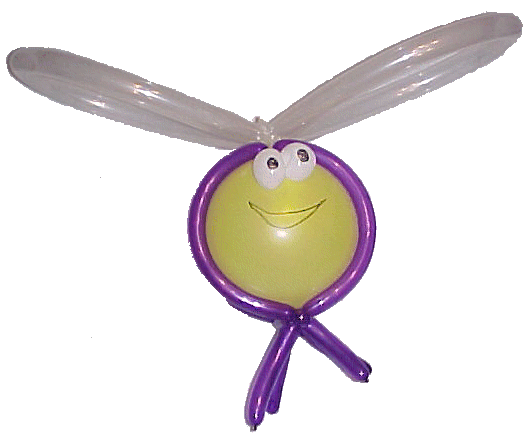
According to Web Counter
you are visitor number